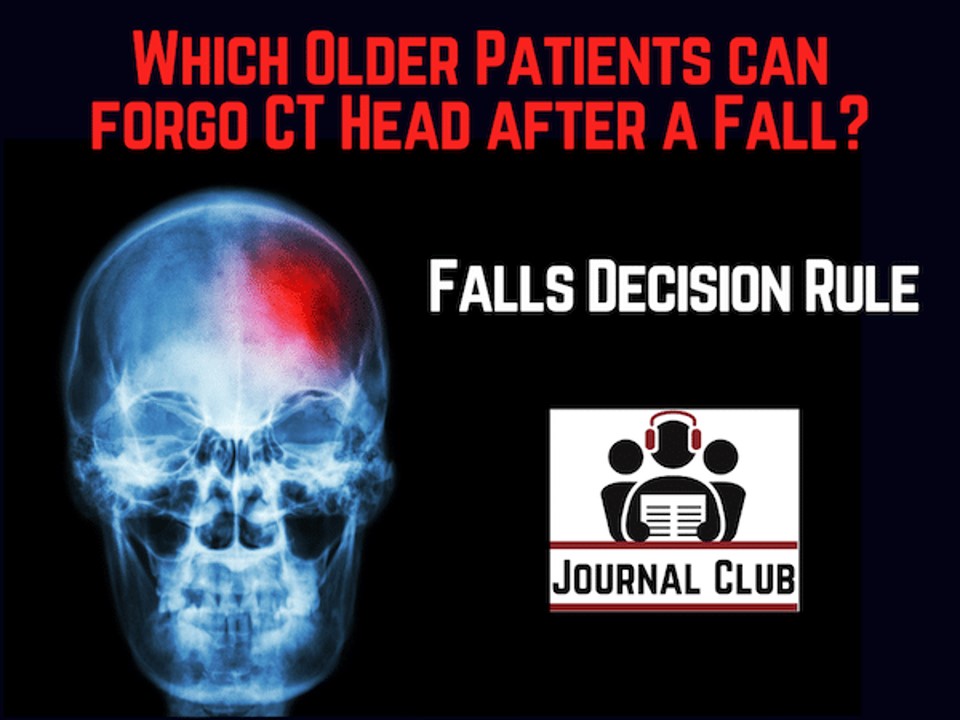Which Older Patients Can Safely Forgo CT Head After a Fall? The Falls Decision Rule

This is a large, prospective, multicentre study to derive a clinical decision tool to identify elderly patients who can safely forgo a CT scan of their head after a ground level fall or out of a bed.
Patients were assess for the following predictors:
age; sex; head impact on falling; loss of consciousness; amnesia; history of previous major bleed; cirrhosis; previous ischemic stroke; chronic renal impairment; Glasgow Coma Scale reduced from baseline; bruise or laceration on the head; new abnormality on neurologic examination; hemoglobin < 10 g/L; platelet count < 80 × 109/L; anticoagulant therapy; antiplatelet therapy; and Clinical Frailty Scale ≥ 5 (impairment of high order IADLs – see scale below)
Clinicians had to fill out these variables before they could view CT head results (if one was ordered).
Patients were followed up to 42 days (based on expert consensus) by chart review.
The study was conducted at 11 different EDs in Canada and the USA, with 4308 patients enrolled.